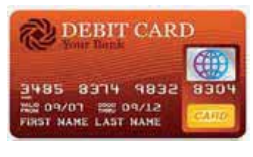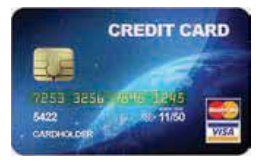Chapter: 11th Commerce : Chapter 12 : Functions of Commercial Banks
Electronic Banking Functions of Commercial Banks
Electronic Banking Functions of Commercial Banks
This reduces cost and time and makes
banking service convenient to the customers. It is operated through internet. This
service is a substitute for drafts, cheques and other paper based transfer of
funds.
1. NEFT - National Electronic Funds Transfer
This was launched by the RBI in 2005.
Under this electronic funds transfer system, bulk transfer of transactions are
settled in batches during specific timings across India. Individuals and
institutions which maintain accounts with a NEFT enabled bank branch are
eligible for using NEFT. Transactions do
not occur under real time basis. Once
in every half hour from 8.00 am to 7.30 pm. 23
settlements are allowed in a day.NEFT transfers are not allowed on Sundays and
bank holidays. Both NEFT and RTGS use IFSC (Indian Financial System Code) - a
11 digit alphanumeric code, to identify a bank branch. IFSC is provided by
IDRBT (Institute for Development & Research on Banking Technology),
Hyderabad.
2. RTGS - Real Time Gross Settlement Systems
It was launched by the RBI in 2013. The
transactions are settled on real time basis. Gross settlement means the
transaction is settled between one bank and another bank without adding any
other transactions. RTGS facility is available between 9.00 am to 4.30 pm on
weekdays and up to 2.00 pm on Saturdays. In one day the RTGS routes about
60,000 transactions worth about Rs. 2,700 billion
and covers over 52,000 bank branches located in 10,000 cities and towns. RTGS
transfers are not allowed on Sundays and bank holidays. Minimum limit for RTGS
transaction is 2 lakhs.
3. Electronic Clearing Services (ECS)
ECS was launched by the RBI in 1995. It
is an electronic method of fund transfer from a bank to another bank. ECS
credit can be used to credit salary, dividend, interest, pension etc. and ECS
debit is used to debit monthly telephone bills, electricity bills, equated
monthly installments (EMI) payments. For this purpose the account holding
individuals and institutions concerned should fill up certain forms and submit
to the banks. ECS transactions between banks are settled in the current account
maintained in the clearing house.
4. CORE Banking Solutions
‘CORE’ stands for ‘Centralized Online
Real time Exchange’. In the centralized server of the bank, all the details of
all the accounts of all the branches of the bank are available. A customer can
withdraw money through cheque
at any branch
of that bank throughout the world. Similarly anyone can deposit money
into the account. Entry of the transactions is recorded in the centralized
server of the bank in real time and can be seen in all the branches of the
bank. This facility is called core banking solutions.
5. Internet Banking or Virtual Banking
Internet banking refers to performing
banking operations through internet, using computers and mobile phone. This can
be done by a customer from home or office or any part of the world and all 24
hours of 7 days.
6. Mobile Banking
Most of the commercial banks have
designed computer programs called apps which can be downloaded in smartphones.
With this app in the smartphone a customer can operate his account transactions
from anywhere. This service is known as mobile banking.
7. Automated Teller Machine (ATM) and CDM Facilities
A customer can withdraw money anytime,
anywhere in India from the ATM machine using the ATM card given by his/her
bank. The machine also shows the balance available in the customers’ account,
provides statement print of the few past transactions, etc. Withdrawal of money
in other bank ATMs is restricted and will be charged beyond the specified
number of usage. Cash Deposit Machine Facility is useful to the public as well
as customers to deposit cash into the account anytime. Similarly there are
cheque deposit machines which receive cheques at any time.
8. IMPS - Immediate Payment Service
IMPS was launched by the National
Payments Corporation of India in November 2010. IMPS allows funds transfer
through mobile phone or internet banking by banking customers and approved non-
banking partners. Its transactions are on real time basis. The current maximum
limit is `. 2 lakhs. It made India a leading country in the world in real time
payments in retail sector.
9. Funds Transfer Through SMS
*99# is the number for the funds transfer from any mobile phone. It was launched in 2014. Every common man in India can transact banking transactions from any corner of India.
10. Debit Cards
ATM card is also called debit card. This
card is more useful in purchase of goods and services anywhere in India, if the
shop maintains a swiping machine facility. VISA card and Maestro card services
are offered by Visa Corporation and Mastercard both from the USA. RuPay cards
services were launched in March 2012 by the National Payments Corporation of
India.

11. Credit Cards
Banks issue credit cards to customers
and other eligible persons. With this card, the holder can purchase goods and
services on credit at any shop in India. If the dues are paid within the
stipulated time no interest is charged. The credit limit is fixed by the
issuing bank based on the income of the cardholder.

Related Topics